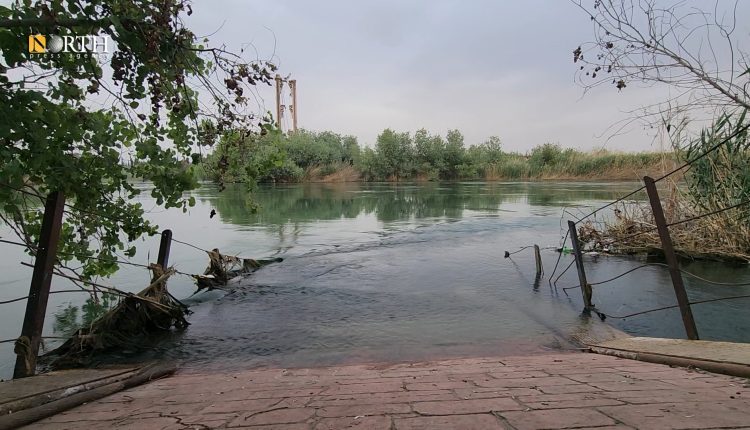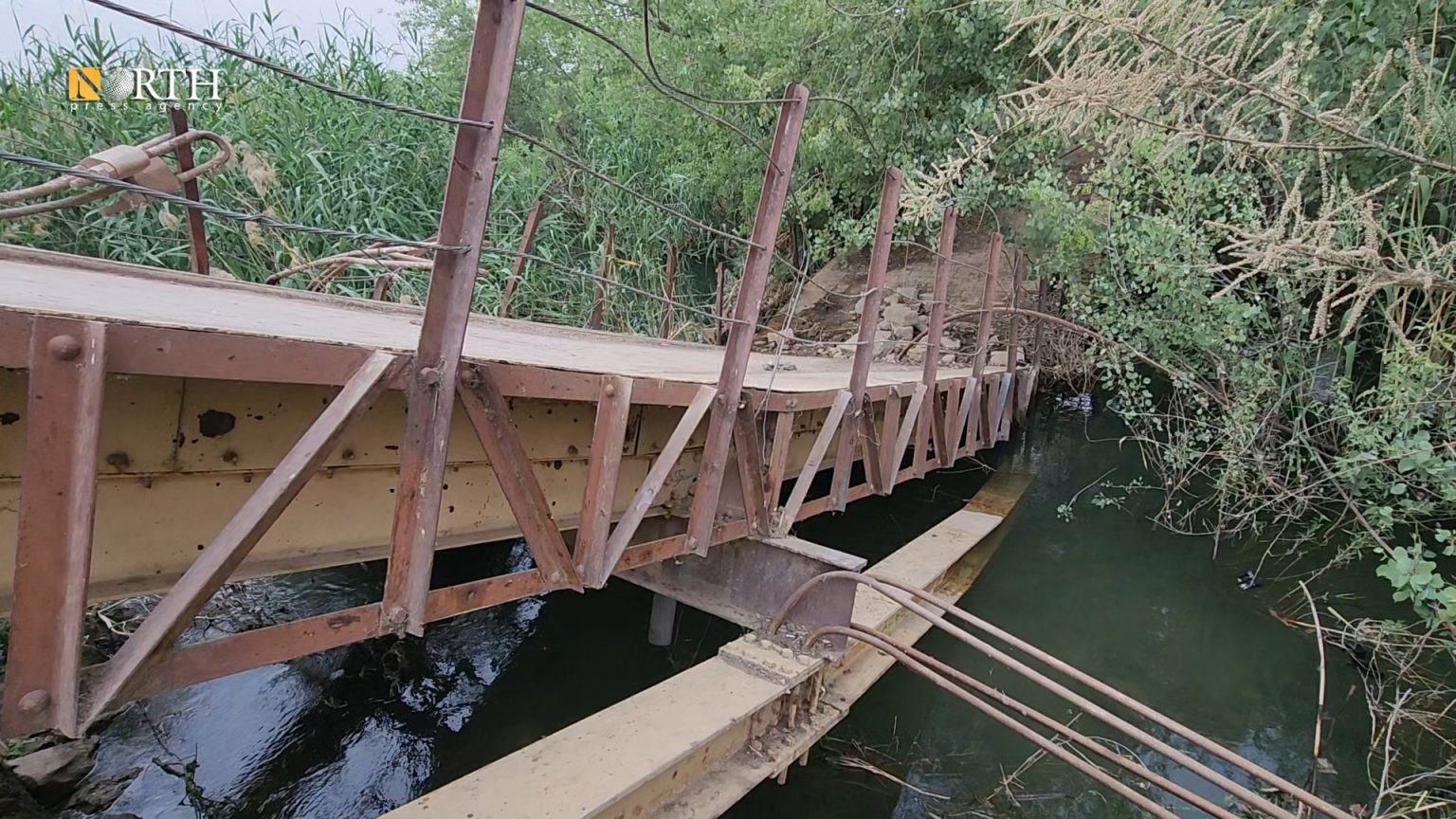
By Hussam Shahin
DEIR EZ-ZOR, Syria (North Press) – When people from Deir ez-Zor, eastern Syria, talk about their memories of the city, they will probably begin with stories of the Suspended Bridge—the most iconic landmark spanning the Euphrates River.
Often called the “City of Bridges” due to the many crossings built over the Euphrates, Deir ez-Zor saw much of that infrastructure destroyed during the rule of the Islamic State (ISIS).
But while bridges can collapse, the stories tied to them do not. The fall of the Suspended Bridge left a deep wound in the hearts of Deir ez-Zor’s people—one shared by anyone who walked or simply passed over what was once one of Syria’s most famous and beautiful bridges.
A bridge through time
The Suspended Bridge stood for nearly nine decades, linking the eastern and western banks of the Euphrates. Its construction began in 1927, under the French Mandate, but the structure did not survive long enough to celebrate its centenary, falling victim to the machinery of war under the al-Assad regime.
Abdul Latif al-Aani, 50, a resident of Deir ez-Zor, told North Press, “The bridge was a symbol of the city. Its collapse was more than just the loss of a means to cross the river—it felt like we had lost something precious.”

He recalls witnessing the evolution of transport across the bridge, from animal-drawn carts and old trucks to modern vehicles carrying people and goods alike.
Majed Al-Ali, from the town of Muhassan in eastern Deir ez-Zor, said that upon returning to the region after the fall of the regime in December 2024, his first stop was the bridge. “Hearing the news of its destruction was devastating. It was like losing a part of our soul,” he said.
Al-Ali now calls on the Syrian transitional government and wealthy individuals from Deir ez-Zor to help rebuild the bridge. “It is not just a civic duty. It is a moral obligation,” he said.
Bridge under fire
Throughout the early years of Syria’s war, which erupted in 2011 following popular protests, the Suspended Bridge endured repeated shelling during battles between regime forces and opposition groups. The heaviest blow came in May 2013 when artillery shells struck its third pillar, according to local residents.
That attack caused the complete collapse of the structure, severing the metal cables that had held the bridge together since its completion in 1931.
The bridge was originally built by a French construction firm over four years. It measured 450 meters in length and 4 meters in width, with each concrete pylon standing 36 meters tall. It was first illuminated in 1947, but due to concerns over heavy loads, vehicles were banned from using it in 1980.
A nearby crossing known as the “Siyasiyeh Bridge” then became the main gateway between the northern countryside and the city—until that, too, was destroyed in 2014, cutting off Deir ez-Zor city from other areas in northeastern Syria.
Before the war, Deir ez-Zor had 26 bridges—14 over the Euphrates and 12 over seasonal valleys. Among them were the “Iman Hajo” and “Kanamat” bridges, both destroyed in early 2013.
The destruction of these crossings severely disrupted civilian life and deepened the economic blockade imposed by ISIS, isolating the city and halting the flow of food and produce.
Today, residents rely on small river ferries to cross between the banks, as reconstruction efforts have yet to begin. One exception is a floating bridge connecting six villages — al-Salihiyah, al-Hussainiyah, Hatla, Khsham, al-Tabiyyah, and Marrat —stretching from al-Merei’iyah to Marrat. It is 145 meters long, 8 meters wide, and can carry up to 60 tons.
